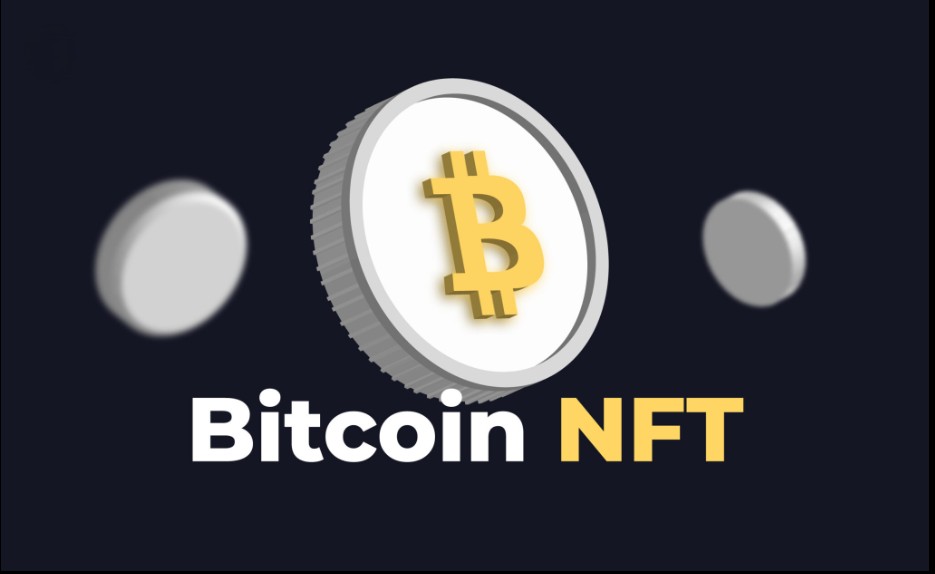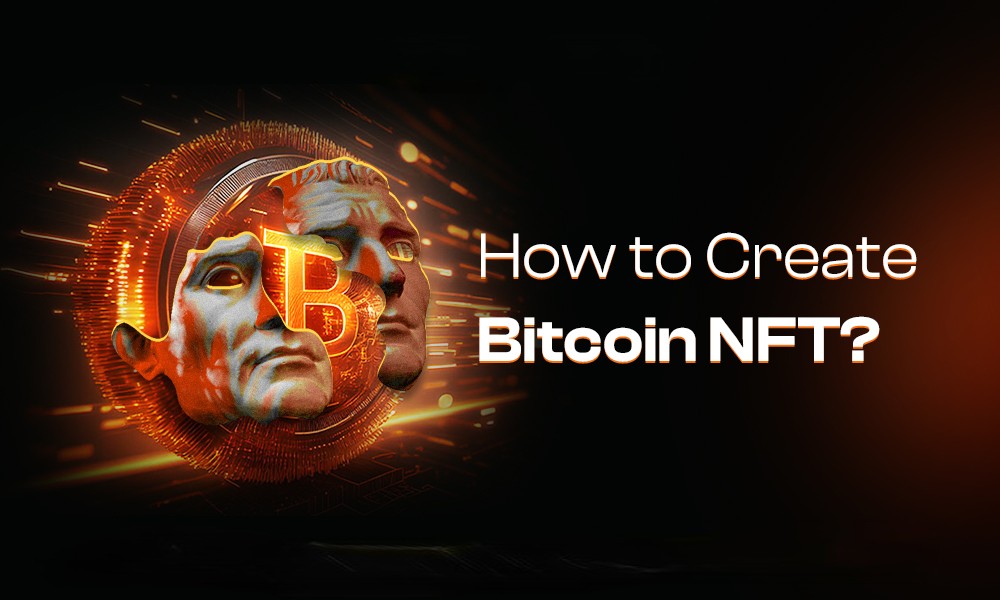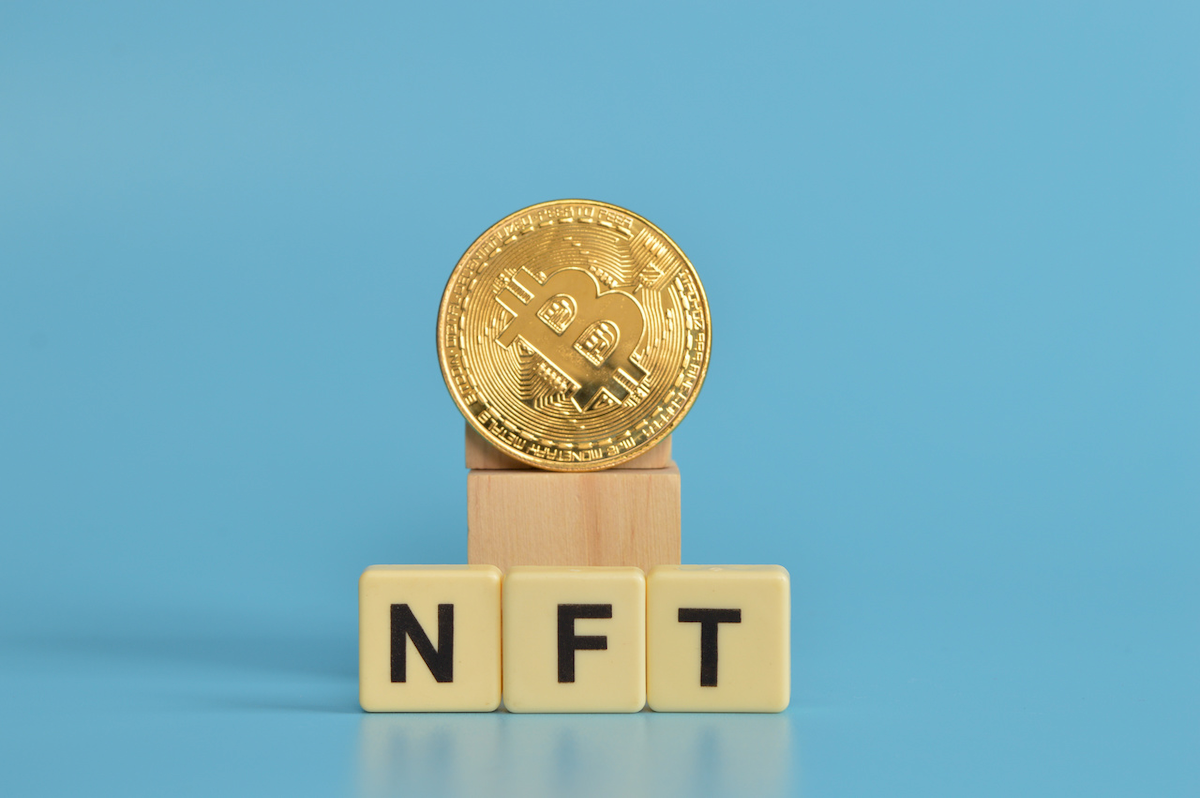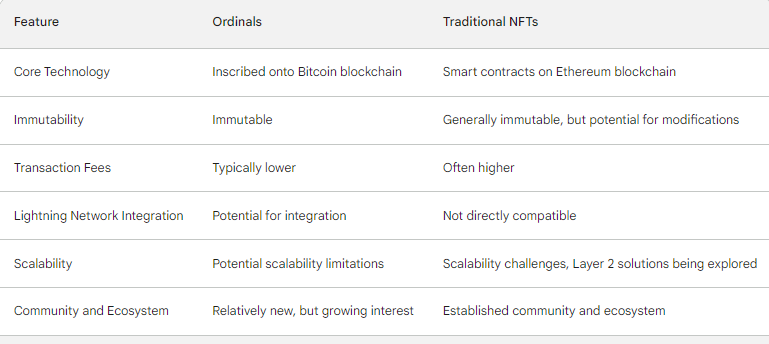
The NFT revolution has taken the world by storm, and now it's time for Bitcoin to join the party. Discover how to create and sell Bitcoin NFTs, transforming your digital assets into valuable collectibles.
Non-fungible tokens, or NFTs, are a novel idea in the world of digital assets that are grabbing the interest of people and companies everywhere. These distinctive digital tokens are becoming well-known for their capacity to represent and validate a broad variety of digital goods, such as virtual land, music, artwork, and collectibles. They function similarly to virtual certificates of ownership.
NFTs have become quite popular, especially in the Ethereum blockchain environment, where they have made it easier to create and trade a wide range of digital assets. On the other hand, the rise of Bitcoin NFTs, or Ordinals, has added another level of intrigue to the NFT scene.
In contrast to its Ethereum-based cousins, Bitcoin NFTs are immediately etched onto the world's most ancient and well-established blockchain network—the Bitcoin blockchain. This built-in compatibility with Bitcoin has many noteworthy benefits.
It's time to affix the digital asset to the Bitcoin blockchain when it's ready. In essence, the Bitcoin NFT is created by this procedure, which requires using specialized software tools that communicate with the blockchain to permanently identify the asset with a unique identification.
Following its successful inscription onto the blockchain, the Bitcoin NFT must now be marketed and sold to prospective purchasers. Typically, this means putting the NFT on specialized NFT marketplaces, advertising it on social media, and interacting with possible collectors.
The advent of Bitcoin NFTs, which provide a safe, affordable, and maybe more scalable substitute for Ethereum-based NFTs, has created new opportunities for digital ownership and asset creation. Bitcoin NFTs are expected to become more and more important in the future of digital assets and collectibles as the NFT market develops.
What Are Ordinals?
Ordinals, or Bitcoin NFTs, are a game-changing idea in the world of digital assets that open up new applications for non-fungible tokens (NFTs) outside of the Ethereum network. Ordinalsare distinct digital assets that are directly logged onto the Bitcoin blockchain, which is the oldest and most well-known blockchain network in the world. This built-in compatibility with Bitcoin provides a number of noteworthy benefits, such as:
- Enhanced Security -Ordinals leverage the robust security measures of the Bitcoin blockchain, ensuring the immutability and tamper-proof nature of the asset ownership records.
- Reduced Transaction Fees -Compared to Ethereum-based NFTs, Ordinals typically incur lower transaction fees, making them more accessible to a broader audience.
- Potential for Lightning Network Integration -Ordinals may eventually become compatible with the Lightning Network, a secondary network that facilitates rapid and low-cost Bitcoin transactions.
Understanding The Concept Of Ordinals
The underlying technology of the Bitcoin blockchain must be understood in order to completely appreciate the idea of Ordinals. The earliest and most well-known cryptocurrency in the world, Bitcoin, runs on a decentralized network of computers that keep a synchronized record of all transactions. This ledger, also referred to as the blockchain, is an impenetrable log of each and every Bitcoin transaction ever made.
Ordinals make use of special features of the Bitcoin blockchain to allow the direct production of non-fungible tokens on the Bitcoin network. In contrast to Ethereum-based NFTs, which necessitate the development of extra data layers, Ordinals are etched onto single Bitcoin satoshis. Several benefits come with this direct inscription, such as increased security and reduced transaction costs.
Creating And Selling Ordinals
The process of creating and selling Ordinals involves several steps:
- Preparing the Digital Asset -The first step involves ensuring that the digital asset, such as an image or audio file, is in a format suitable for inscription onto the Bitcoin blockchain.
- Inscribing the Ordinal -Once the asset is prepared, it is inscribed onto the Bitcoin blockchain using specialized software tools. This process involves associating the asset with a unique identifier, essentially creating the Ordinal.
- Marketing and Selling -With the Ordinal successfully inscribed, the next step involves marketing and selling it to potential buyers. This often entails listing the Ordinal on dedicated NFT marketplaces, promoting it through social media channels, and engaging with potential collectors.
The introduction of Ordinals, a safe, affordable, and maybe more scalable substitute for Ethereum-based NFTs, has created new opportunities for digital ownership and asset creation. Ordinals are expected to become more and more important in the future of digital assets and collectibles as the NFT ecosystem develops.
How To Create Bitcoin NFTs
The process of producing Bitcoin NFTs, or Ordinals, consists of a number of processes that include preparing the digital asset, adding it to the Bitcoin blockchain, and then promoting and selling it on specific NFT markets.
Step 1 - Preparing The Digital Asset
The process of generating a Bitcoin NFT starts with the digitization of the asset. This entails making sure the asset—such as a particular picture or audio file type—is in a format that is appropriate for being inscribed onto the Bitcoin network.
File Format -Ordinals support a variety of file formats, including:
- Images - PNG, JPEG
- Audio - MP3, WAV
- Text - TXT
File Size -The maximum file size for an Ordinal inscription is currently 100MB.
File Content -You can inscribe any type of digital asset onto the Bitcoin blockchain, including:
- Artwork
- Music
- Videos
- Collectibles
- Text documents
Step 2 - Inscribing The NFT Onto The Bitcoin Blockchain
It's time to affix the digital asset to the Bitcoin blockchain when it's ready. In essence, the Bitcoin NFT is created by this procedure, which requires using specialized software tools that communicate with the blockchain to permanently identify the asset with a unique identification.
Software Tools -Several software tools can be used to inscribe Ordinals, including:
- Ord
- RunOrd
- Gamma
- Unchained
Inscription Process -The inscription process typically involves the following steps:
- Selecting the Digital Asset -Choose the digital asset you want to inscribe onto the Bitcoin blockchain.
- Choosing an Ordinals Tool -Select an Ordinals creation tool, such as Ord or RunOrd.
- Uploading the Digital Asset -Upload the digital asset to the Ordinals creation tool.
- Setting Inscription Parameters -Specify the desired inscription parameters, such as the asset name, description, and properties.
- Initiating Inscription -Start the inscription process, which will interact with the Bitcoin blockchain to create the Ordinal.
- Obtaining the Ordinal Identifier -Receive the unique identifier of the newly created Ordinal, which serves as proof of ownership.
Step 3 - Marketing And Selling The Bitcoin NFT
Following its successful inscription onto the blockchain, the Bitcoin NFT must now be marketed and sold to prospective purchasers. Typically, this means putting the NFT on specialized NFT marketplaces, advertising it on social media, and interacting with possible collectors.
NFT Marketplaces -Numerous NFT marketplaces support the buying and selling of Ordinals, including:
- OpenSea
- Rarible
- OrdinalsBot
- Gamma
Marketing Strategies -Effective marketing strategies for selling Ordinals include:
- Highlighting Uniqueness -Emphasize the unique characteristics and value proposition of your Ordinal.
- Building Community -Engage with potential buyers through social media communities and online forums.
- Leveraging Marketplaces -Utilize dedicated NFT marketplaces to increase visibility and reach potential collectors.
Pricing Considerations -When determining the price for your Ordinal, consider factors such as:
- Rarity -Uniqueness and scarcity of the digital asset.
- Demand -Interest and potential buying power for the asset.
- Market Trends -Current pricing patterns in the NFT market.
Making and offering Bitcoin NFTs for sale may be a fun and fulfilling project that lets you show off your digital works and maybe even make money from your special assets. You may improve your chances of success in the fast-paced world of Bitcoin NFTs by properly preparing your digital asset, making use of the right software tools, and putting successful marketing techniques into practice.
How To Trade Ordinals
Trading Ordinals, or Bitcoin NFTs for short, is the act of purchasing and vending these one-of-a-kind digital assets on NFT markets. To successfully traverse the market, it is essential to comprehend the fundamental concepts and tactics, just as in any other type of trading.
Step 1 - Choosing An NFT Marketplace
The first step in trading Ordinals is to select a reputable NFT marketplace that supports the buying and selling of these assets. Some popular options include:
- OpenSea -A comprehensive NFT marketplace with a wide range of Ordinals available for trading.
- Rarible -A user-friendly platform known for its emphasis on community and collaboration.
- OrdinalsBot -A dedicated marketplace specifically designed for trading Ordinals.
- Gamma -An emerging platform that offers additional features such as minting and social interactions.
Step 2 - Creating An Account And Connecting Your Wallet
Once you've chosen an NFT marketplace, you'll need to create an account and connect your cryptocurrency wallet. This wallet will serve as the repository for your Ordinals and the means to execute transactions. Popular wallets compatible with Ordinals include:
- Wasabi -A privacy-focused wallet known for its security features.
- Sparrow -A user-friendly wallet specifically designed for Ordinals and Bitcoin transactions.
- Xverse -A multi-asset wallet that supports a variety of cryptocurrencies, including Ordinals.
Step 3 - Funding Your Wallet
Before you can start trading Ordinals, you'll need to fund your connected wallet with Bitcoin. This will allow you to pay transaction fees and purchase Ordinals from other users. You can purchase Bitcoin from cryptocurrency exchanges or receive it from others.
Step 4 - Browsing And Selecting Ordinals
Most NFT marketplaces provide search and filtering options to help you find the Ordinals you're interested in. You can filter by collection, price, properties, and other relevant criteria.
Step 5 - Placing Buy Or Sell Orders
Once you've found an Ordinal you want to buy or sell, you can place an order. This involves specifying the quantity and price you're willing to accept. Buy orders are placed in order books, and if your order matches a sell order, the transaction will be executed.
Step 6 - Completing The Transaction
Upon successful order execution, the Ordinal will be transferred to your wallet, and the corresponding Bitcoin payment will be made to the seller or received from the buyer.
Additional Considerations
- Transaction Fees -NFT marketplaces typically charge transaction fees for buying and selling Ordinals. These fees are usually a percentage of the transaction value.
- Gas Fees -The Bitcoin blockchain requires gas fees to process transactions. These fees vary depending on network congestion and transaction size.
- Security -Always prioritize security when trading Ordinals. Use reputable marketplaces, store your private keys securely, and be cautious of phishing scams.
- Research and Market Analysis -Conduct thorough research on the Ordinals you intend to trade. Understand the project, its community, and its potential value proposition.
- Risk Management -Trading Ordinals involves inherent risks. Set clear trading goals, implement risk management strategies, and avoid over-investing in a single asset.
Trading Ordinals offers a unique opportunity to participate in the growing ecosystem of digital assets and NFTs. By understanding the trading process, following safety precautions, and conducting thorough research, you can increase your chances of success in this dynamic market.
How To Buy Bitcoin NFTs
Purchasing Bitcoin NFTs is a multi-step process that includes creating a wallet, selecting a marketplace or platform, locating the NFT you wish to buy, and completing the transaction. Here is a thorough how-to:
- Set Up a Cryptocurrency Wallet - Before you can buy Bitcoin NFTs, you'll need a cryptocurrency wallet that supports Bitcoin and NFTs. Make sure it's compatible with the platform or marketplace you plan to use.
- Choose a Platform or Marketplace - Select a platform or marketplace where Bitcoin NFTs are listed for sale. Some popular options include OpenSea, Rarible, MintLayer, and platforms built on Bitcoin sidechains like Stacks.
- Fund Your Wallet - Add Bitcoin to your wallet. You can do this by buying Bitcoin from a cryptocurrency exchange and then transferring it to your wallet address.
- Browse and Find NFTs - Explore the platform to find the Bitcoin NFTs you're interested in. You can use filters, categories, or search functions to narrow down your options.
- Inspect the NFT - Before making a purchase, carefully review the details of the NFT, including the artwork, metadata, creator information, and any associated royalties.
- Place a Bid or Make a Purchase - Depending on the platform, you may have the option to either place a bid or make an immediate purchase. Follow the platform's specific process for buying NFTs.
- Confirm the Transaction - After placing a bid or initiating a purchase, you'll likely need to confirm the transaction. This may involve signing a transaction using your wallet.
- Wait for Confirmation - The transaction will need to be confirmed on the blockchain, which may take some time depending on network congestion and the specific blockchain being used.
- Receive the NFT - Once the transaction is confirmed, the NFT will be transferred to your wallet, and you'll be the official owner.
- Optional - View or Display Your NFT - You can view your newly acquired NFT in your wallet or on the platform where you purchased it. Some platforms also allow you to display your NFT in virtual galleries or on social media.
- Consider Storing Metadata - Along with the NFT, it's a good practice to store the associated metadata. This may include information about the creator, title, and any other relevant details.
Keep in mind that the particular features and stages could change slightly according on the marketplace or platform you select. Always be sure you are following the rules and directions that the platform you are utilizing has supplied.
Additionally, before making a purchase, be wary of frauds and confirm the authenticity of the NFT and its author. It is advised to conduct in-depth study and maybe ask reliable people or communities for help.
How To Sell Bitcoin NFTs
The process of selling Bitcoin NFTs, or Ordinals, is simple and consists of offering your Ordinal for sale, determining a fair price, publicizing your listing, and completing the transaction with the buyer. Here's how to sell Bitcoin NFTs step-by-step:
Step 1 - Select An NFT Marketplace
The first step is to select a reputable NFT marketplace that supports the selling of Ordinals. Some popular options include:
- OpenSea -A leading NFT marketplace with a vast audience and a wide range of Ordinals available for sale.
- Rarible -A user-friendly platform known for its community-driven approach and support for Ordinals.
- OrdinalsBot -A specialized marketplace dedicated to Ordinals trading, offering a unique platform for selling your Ordinals.
- Gamma -An emerging platform offering additional features like minting and social interactions, providing an alternative marketplace for selling Ordinals.
Step 2 - Create An Account And Connect Your Wallet
Once you've chosen an NFT marketplace, you'll need to create an account and link your cryptocurrency wallet. This wallet will serve as the repository for your Ordinals and the means to receive payments from buyers. Popular wallets compatible with Ordinals include:
- Wasabi -A privacy-focused wallet known for its security measures.
- Sparrow -A user-friendly wallet specifically designed for Ordinals and Bitcoin transactions.
- Xverse -A multi-asset wallet that supports various cryptocurrencies, including Ordinals.
Step 3 - List Your Ordinal For Sale
Navigate to the listing section of the chosen NFT marketplace and select the Ordinal you want to sell. Follow the marketplace's instructions to provide details about your Ordinal, including its description, properties, and desired selling price.
Step 4 - Set A Competitive Price
Research the market value of similar Ordinals to determine a competitive price that reflects the value of your asset. Consider factors such as the rarity, uniqueness, and demand for your Ordinal when setting the price.
Step 5 - Promote Your Listing
Share your Ordinal listing on social media platforms, NFT communities, and relevant online forums. Engage with potential buyers, answer questions, and highlight the unique features and value proposition of your Ordinal to attract interest.
Step 6 - Complete The Transaction
Once a buyer purchases your Ordinal, the marketplace will facilitate the transfer of the Ordinal from your wallet to the buyer's wallet. You will also receive the corresponding Bitcoin payment in your wallet.
A special chance to profit from your digital assets and take part in the expanding NFT market is provided by selling Bitcoin NFTs. You may successfully list, market, and sell your Ordinals by following these procedures, which may enable you to make money off of your original digital works.
Ordinals Vs. Traditional NFTs
Both ordinals and standard NFTs are examples of unique digital assets, but they differ in a few key ways. Making judgments and navigating the NFT ecosystem require an understanding of these distinctions.
Core Technology
- Ordinals -Ordinals are directly inscribed onto the Bitcoin blockchain, utilizing the existing infrastructure and security of the Bitcoin network.
- Traditional NFTs -Traditional NFTs, often based on the Ethereum blockchain, rely on smart contracts, self-executing code embedded in the blockchain, to define and manage ownership rights.
Immutability
- Ordinals -Ordinals are immutable, meaning once inscribed onto the Bitcoin blockchain, their ownership records cannot be altered or deleted.
- Traditional NFTs -While traditional NFTs are generally considered immutable, there have been instances of modifications to metadata or even deletion of NFTs, raising concerns about their long-term preservation.
Transaction Fees
- Ordinals -Ordinals typically incur lower transaction fees compared to traditional NFTs, as they utilize the Bitcoin blockchain's fee structure, which is often less congested and more cost-effective than Ethereum.
- Traditional NFTs -Traditional NFTs often face higher transaction fees due to the Ethereum blockchain's congestion and gas fee model.
Potential For Lightning Network Integration
- Ordinals -Ordinals hold the potential to integrate with the Lightning Network, a secondary network that facilitates rapid and low-cost Bitcoin transactions. This could lead to more efficient and scalable NFT marketplaces.
- Traditional NFTs -Traditional NFTs are not directly compatible with the Lightning Network, limiting their potential for low-cost and fast transactions.
Scalability
- Ordinals -Ordinals face potential scalability limitations as the number of inscriptions on the Bitcoin blockchain increases. The limited block size could lead to higher transaction fees and slower confirmation times.
- Traditional NFTs -Traditional NFTs on Ethereum also face scalability challenges, as the network can become congested during periods of high activity. Scaling solutions like Layer 2 networks are being explored to address these issues.
Community And Ecosystem
- Ordinals -Ordinals are a relatively new phenomenon, and their community and ecosystem are still evolving. However, there is growing interest in Ordinals, and several projects are being developed to enhance their functionality and usability.
- Traditional NFTs -Traditional NFTs have a more established community and ecosystem, with numerous NFT marketplaces, tools, and projects. This provides more options and support for NFT creators and collectors.
In addition to the core differences outlined above, here's a table summarizing the key comparison points between Ordinals and traditional NFTs:
All things considered, Ordinals provide a novel framework for NFTs by utilizing the security and immutability of the Bitcoin blockchain. Conventional NFTs provide a more expansive ecology and greater flexibility, but Ordinals have a distinct strategy that has the potential to completely change the NFT market.
People Also Ask
Is Bitcoin Better Than NFT?
While comparing cryptocurrencies vs NFTs, the former is often lauded for its volatility. Although some see this volatility as a positive point, others see it as a major negative point. NFTs, on the other hand, tend to be much more stable because they are not subject to the same market forces that cryptocurrencies are.
How Much Bitcoin Does A NFT Cost?
The cost to mint an NFT will vary depending on the marketplace you use and the blockchain you mint on. To mint on Ethereum, the most popular blockchain for NFTs, you'll usually have to pay gas fees, which can get costly. Along with listing fees and commissions, your costs could range anywhere from $0.01 to $1000.
Can I Sell My NFT Directly?
Listing your NFTConnect your Web3 wallet to the NFT platform and head to their listing page to see the available options. A seller can usually choose between a fixed-price sale or different auctions. With a fixed-price sale, any buyer can instantly purchase your NFT by paying the listing amount.
Conclusion
With the introduction of Ordinals, a ground-breaking method of digital ownership, the field of NFTs has seen a tremendous transformation. Ordinals provide a safe, unchangeable, and maybe more affordable option to conventional Ethereum-based NFTs by utilizing the strong infrastructure of the Bitcoin blockchain.
Ordinals offer a number of distinct benefits over standard NFTs that have the potential to completely change the way digital assets are used in the future. Their interoperability with the Lightning Network promises speedier and more scalable transactions, while their direct inscription onto the Bitcoin blockchain guarantees immutability and improves security.
Ordinals' community and ecology will probably grow as they evolve further, offering more resources, initiatives, and assistance to collectors and producers. This expansion may help Ordinals draw in a larger user base and strengthen their position in the NFT sector.
To sum up, Ordinals have become a disruptive force in the NFT market, upending the hegemony of conventional Ethereum-based NFTs. Their distinct qualities and innovative possibilities present a bright future for digital asset production and ownership.


